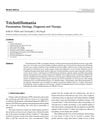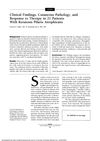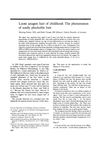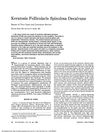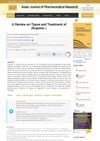Differential Diagnosis of Hair Loss in Children
May 2004
in “
Journal der Deutschen Dermatologischen Gesellschaft
”
hair shaft anomalies scalp infections hormonal dysregulation scarring alopecia clinical examination photomicroscopy trichogram scalp biopsy TrichoScan trichorrhexis nodosa monilethrix pili torti Netherton syndrome Menkes disease trichothiodystrophy alopecia areata trichotillomania traction alopecia congenital triangular alopecia tinea capitis loose anagen hair syndrome congenital hypotrichoses ectodermal dysplasias Marie Unna hypotrichosis traumatic scalp cicatrizing alopecia hair shaft disorders scalp infections hormonal imbalance scarring hair loss clinical exam scalp microscopy hair pull test scalp biopsy hair scan hair breakage beaded hair twisted hair Netherton syndrome Menkes kinky hair syndrome sulfur-deficient hair patchy hair loss hair pulling disorder traction hair loss triangular bald patch scalp ringworm loose hair syndrome congenital sparse hair ectodermal disorders Marie Unna hair loss traumatic scarring hair loss
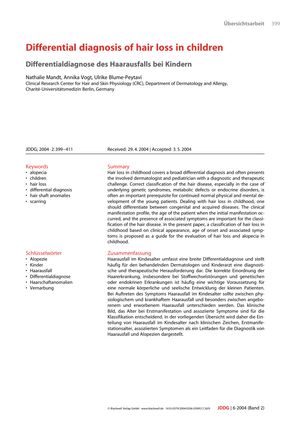
TLDR The document concludes that early diagnosis and treatment are crucial for children with hair loss to prevent permanent damage, although not all conditions can be effectively treated.
The 2004 document provides an extensive review of hair loss in children, categorizing it into congenital and acquired types and further classifying it based on clinical presentation, age, and symptoms. It identifies common causes of hair loss in different age groups, ranging from hair shaft anomalies and scalp infections in younger children to hormonal dysregulation and scarring alopecia in adolescents. Diagnostic methods include clinical examination, photomicroscopy, trichogram, scalp biopsy, and TrichoScan. The paper details specific hair shaft anomalies and genetic syndromes, such as trichorrhexis nodosa, monilethrix, pili torti, Netherton syndrome, Menkes disease, and trichothiodystrophy, and their implications for diagnosis and treatment. It also covers alopecia areata, trichotillomania, traction alopecia, congenital triangular alopecia, tinea capitis, loose anagen hair syndrome, congenital hypotrichoses, ectodermal dysplasias, Marie Unna hypotrichosis, scarring alopecias, and traumatic scalp cicatrizing alopecia. The document underscores the psychological impact of hair loss on children and the importance of early diagnosis and appropriate treatment to prevent permanent alopecia, while acknowledging that not all conditions have effective treatments and may require cosmetic or surgical interventions.
